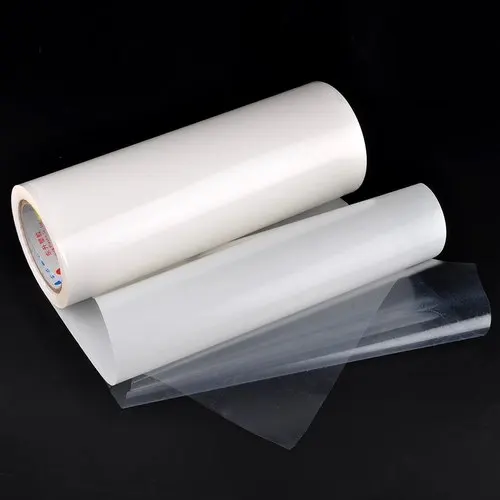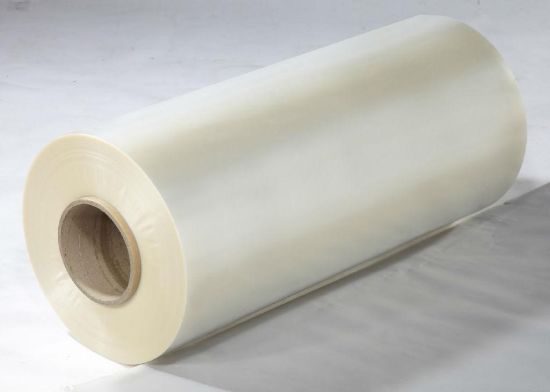After the various components of the insole have been assembled, glue is typically what is used to affix them to one another during the traditional manufacturing process. The laminated product, on the other hand, exudes an offensive odor that is neither hazardous to human health nor harmful to the environment. This is due to the fact that the glue already possesses a sizeable quantity of the required solvent within its composition. As a result of this, the products manufactured by Foamwell are the ones that come with the highest level of endorsement when it comes to the method of applying hot melt adhesive film to insoles.
It is possible to create an adhesive that has the consistency of a solid when it is at room temperature but can be transformed into a liquid by raising the temperature to which it is heated. A hot melt adhesive film is the name given to this particular variety of adhesive. It is a polymer product that does not have any color or odor and is devoid of any kind of solvent. Additionally, it does not pose any threat to the ecosystem that is nearby. Because it is simple to manipulate and does not easily leak glue, it is suitable for use in a wide variety of applications, such as in the production of clothing and underwear, as well as products for children and water treatment, materials for shoe production, and in other industries. In addition to this, it can be utilized in a diverse assortment of contexts. At the moment, there is a rise in the quantity of manufacturing facilities that are fusing insoles with hot melt adhesive films. It's possible that this is due to the impact that policies have had, or the fact that quality has improved. This is the path that the market is currently taking, which will eventually lead to the development of the market as a whole in the future.

When it comes to the process of bonding the insole, why do you recommend using hot melt adhesive film?
EVA and low-temperature TPU films are the types of hot melt adhesive films that perform the best when it comes to insole bonding. Other types of hot melt adhesive films may also be used.
When it comes to the process of bonding the insole, it is recommended that you use the hot melt adhesive film of EVA composition rather than the low-temperature TPU composition. This is because the hot melt adhesive film can withstand higher temperatures. This is due to the fact that the low-temperature TPU composition may not be as effective, depending on the material of the insole foam, which is the reason for this. The melting point of the EVA composition is the primary factor that is responsible for determining this preference. If the bottom material is EVA foam, then you should use the hot melt adhesive film that is also made of EVA. If not, then you should use something else. In that case, you ought to try your hand at something else. It is more appropriate, and if it is only the bonding and compounding of two fabrics, it is recommended to choose a hot melt adhesive film with TPU composition because the same-sex attracts. If it is only the bonding and compounding of two fabrics, however, it is not recommended. However, it is not recommended if all that will be accomplished is the bonding and compounding of two different fabrics.
This is because individuals who are of the same gender have a natural tendency to be drawn to one another. The component of EVA is called in Chinese, which in English translates to vinyl acetate copolymer. The Chinese name for this component is. This component contains molecules that are very much like those found in EVA foam, and as a result, the two are very similar. Choose a hot melt that has components that are comparable to those of the polyurethane (PU) foam you will be using because the Chinese name for the TPU component is polyurethane. In addition, the Chinese name for the TPU component is also polyurethane. When making a choice, it is essential to keep this in mind and consider its implications. Both polyurethane and polyurethane foam contain a significant amount of the same fundamental building blocks. The adhesive film is better suited for bonding, and the TPU hot melt adhesive film adheres (has a higher viscosity) to the fabric in a more effective manner than the traditional adhesive film.
The actual operating temperature can reach between 80 and 100 degrees Celsius, but the melting point of EVA and low-temperature TPU hot melt adhesive films is relatively low at only about 80 degrees Celsius. This contrasts with the actual operating temperature, which can reach between 80 and 100 degrees Celsius. The difference in melting point is because the actual operating temperature can reach anywhere from 80 to 100 degrees Celsius. This temperature range allows for a range of flexibility in the process. This is done in order to improve both the safety of the material that has been adhered and the productivity of the manufacturing process. Specifically, the safety of the material that has been adhered is improved. Due to the extremely high melting point of the hot melt adhesive film, the temperature of operation that is associated with it will also be significantly higher. Because of this, it is very simple to damage the foam while the product is being laminated, which, in turn, will have an effect on the overall quality of the finished product. For instance, it is very simple to make the material flatter or to make the foam melt. Another example is that it is very simple to make the material wrinkle.
Putting insoles together with the help of hot melt adhesive film and the many steps involved in doing so.

When it comes to the vast majority of situations, the process of bonding the insole only requires the application of a single layer of the adhesive. In other words, the combination of knitted fabric, foam, hot melt adhesive film, and three layers is done in order to effectively improve production efficiency. It is not necessary to choose a release paper when purchasing a hot melt adhesive film; all that is required to complete the purchase is the film itself. This is because the release paper will not be used. Utilize it in the following manner:Because the foamed side is thick and has a difficult time conducting heat, the heat is transferred through the knitted fabric by inserting the hot melt adhesive film in the space that exists between the knitted fabric and the foam. After this, professional pressing equipment is used to heat from the side of the knitted fabric. Following this step, there is a necessary wait period during which the adhesive film must be allowed to cool before moving on to the subsequent punching and other processes. In addition, some manufacturers make use of the grinding machine, which is one piece of production equipment in their arsenal. This is due to the fact that the fabric and the foam cannot be joined together until the middle layer of the hot melt adhesive films has been melted, which is a prerequisite for doing so.
The process of directly forming the insole foam or rubber in the abrasive tool is analogous to the process of fabricating specialized gloves and works in a manner that is comparable to how the process works. This is accomplished in a fashion that is comparable to the one described in the following:This stands in stark contrast to the approaches that were covered earlier in the discussion. This abrasive tool is used once more during the subsequent lamination with the cloth in order to complete the subsequent lamination. In order to produce a self-adhesive cloth that is suitable for use in a variety of contexts, one needs to make use of equipment that is suitable for use in a commercial setting. First, the film containing the hot melt adhesive needs to be backed onto one side of the fabric (one side of the cloth, one side of the adhesive), and then a second lamination needs to take place with the material that is at the bottom that is either foam or rubber.

